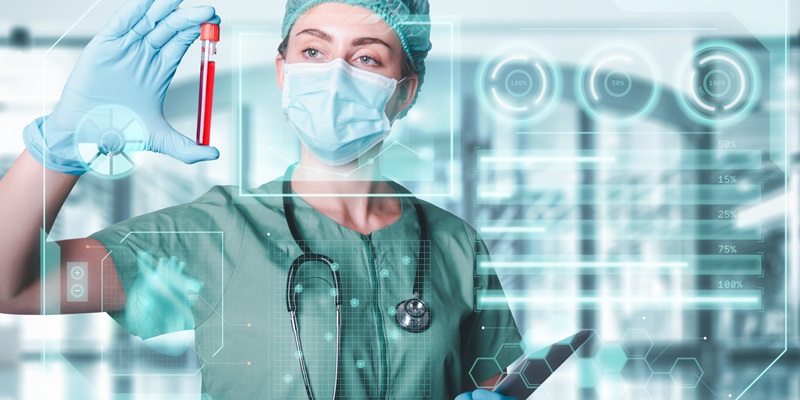The healthcare industry is undergoing a profound transformation thanks to data science and artificial intelligence (AI). With the ability to analyze vast amounts of data, predictive models, and machine learning algorithms, these technologies are revolutionizing patient care, diagnosis, and treatment options. This article delves into the various ways in which data science and AI are reshaping the healthcare landscape.
Predictive Modeling: Identifying Individuals at High Risk
By analyzing large datasets containing patient records, genetic information, and lifestyle data, predictive models are now capable of identifying individuals at high risk for specific diseases. This proactive approach allows healthcare professionals to intervene early and provide personalized care. For example, a predictive model can pinpoint patients who are at a higher risk of developing diabetes based on their medical history, genetic markers, and lifestyle choices. With this information, healthcare providers can implement preventive measures, such as lifestyle interventions or medication, to reduce the likelihood of disease progression.
Image Analysis: Enhancing Anomaly Detection
Machine learning algorithms bring a new level of accuracy to imaging analysis, enabling healthcare providers to detect anomalies that might go unnoticed by the human eye. By analyzing X-rays, MRIs, CT scans, and other imaging data, these algorithms can identify tumors, fractures, and other abnormalities. This not only improves the speed and accuracy of diagnoses but also aids in planning appropriate treatment strategies. With AI-powered systems, healthcare providers can offer more precise interventions, resulting in better outcomes for patients.
Genomic Medicine: Unlocking Personalized Treatment Plans
Genomic medicine, made possible through data science and AI, has unlocked the potential for personalized treatment plans. By analyzing patients’ genomic information, such as their DNA sequences, researchers and healthcare providers can gain insights into the underlying genetic factors contributing to diseases. This knowledge allows for tailored treatment plans that consider an individual’s unique genetic makeup, improving the efficacy of therapies while minimizing potential side effects. From targeted cancer treatments to precision medicine for rare genetic disorders, data science and AI are revolutionizing the way diseases are treated.
Natural Language Processing (NLP): Extracting Valuable Insights
The analysis of patient notes, reports, and medical literature is a time-consuming task for healthcare professionals. However, with Natural Language Processing (NLP) algorithms, valuable information can be extracted efficiently from these sources. NLP algorithms can read and understand medical texts, enabling them to extract relevant patient data, identify patterns, and support accurate diagnoses. This technology not only saves time but also enhances the accuracy of diagnoses and aids in advancing medical research by mining valuable insights from a vast amount of medical literature.
Remote Patient Monitoring: Real-Time Insights
Wearable devices have gained significant popularity in recent years. They not only track activities but also collect real-time data on vital signs, blood sugar levels, and other health metrics. This real-time data is invaluable for remote patient monitoring, especially for individuals with chronic conditions or those recovering from surgeries. Healthcare providers can monitor patients’ health remotely, receive alerts in the case of any anomalies, and intervene promptly if necessary. This type of remote monitoring not only improves patient outcomes but also reduces the burden on healthcare institutions, as unnecessary hospital visits can be avoided.
Fraud Detection: Reducing Financial Burden
AI is proving to be instrumental in detecting fraudulent activities in healthcare systems. By analyzing billing data and patterns, AI algorithms can identify anomalies that may indicate fraudulent activities. This helps healthcare organizations reduce the financial burden associated with fraudulent claims and ensures that resources are allocated to genuine patient care needs. By tackling fraud, the healthcare system becomes more efficient and can divert resources towards improving patient care.
Resource Management: Efficient Delivery of Care
Predictive modeling goes beyond identifying high-risk individuals. It can also help hospitals and healthcare organizations manage resources more efficiently. By analyzing historical data, predictive models can forecast patient inflow, helping healthcare institutions plan staff schedules, allocate beds, and optimize workflows. This ensures that patients receive timely care, reducing waiting times and improving overall patient satisfaction. Additionally, predictive modeling can help healthcare organizations identify areas of high demand for specific treatments, facilitating resource distribution and ensuring that patients receive the right care at the right time.
Improved Patient Care: Diagnoses, Treatments, and Outcomes
The marriage of data science and AI with medicine is truly a game-changer. The ability to analyze large datasets, detect anomalies, and extract valuable insights from medical texts has led to improved diagnoses, more effective treatments, and better patient outcomes. With personalized treatment plans, enhanced anomaly detection, and real-time access to patient data, healthcare providers can deliver tailored care that addresses individual needs and maximizes treatment effectiveness.
Data science and artificial intelligence are revolutionizing the healthcare industry. From predictive modeling and imaging analysis to genomic medicine and natural language processing, these technologies are reshaping the way healthcare is delivered. With remote patient monitoring and fraud detection, they are also improving resource allocation and reducing financial burdens on healthcare organizations. The marriage of data science and AI with medicine has opened up new horizons, promising a future of advanced diagnostics, personalized treatments, and improved patient outcomes. The transformative potential of these technologies is undeniable, and their impact on the field of healthcare will only continue to grow.

